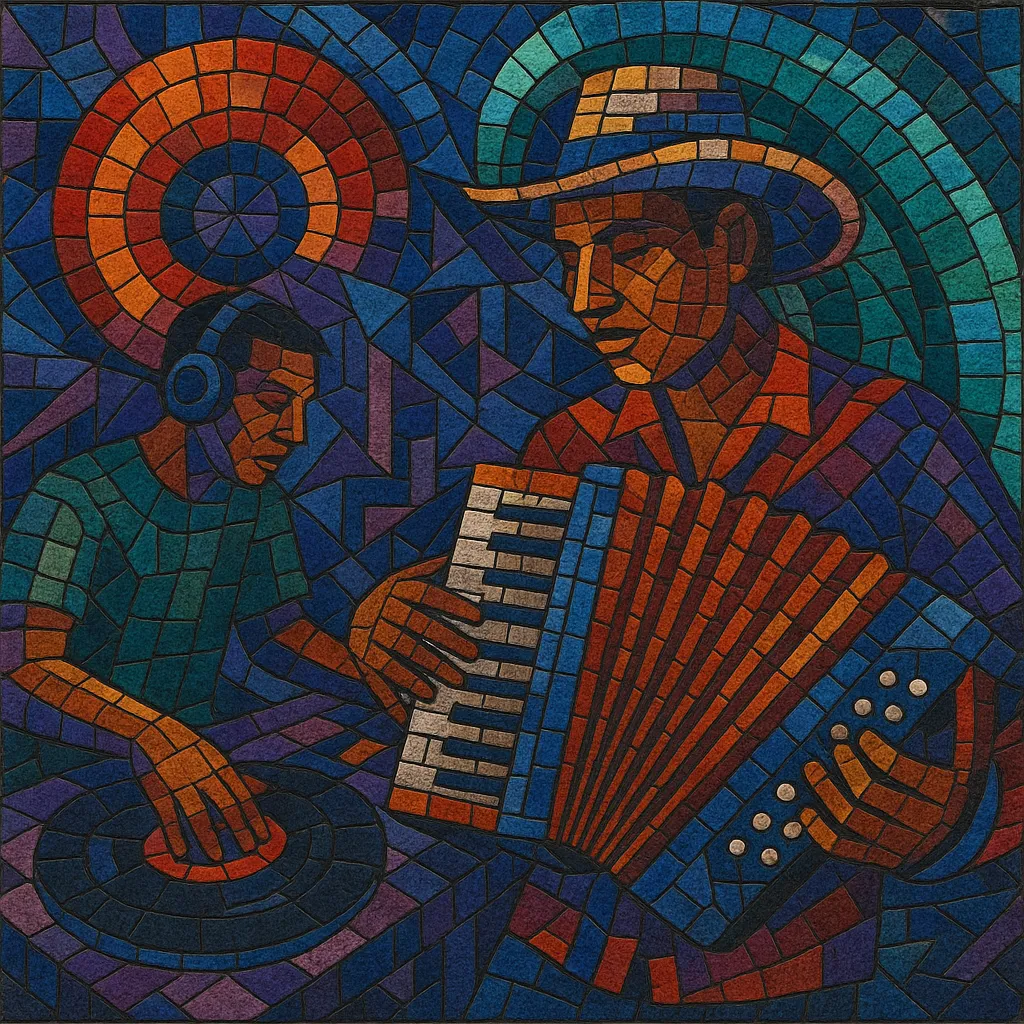Electrocumbia (often called digital cumbia or nu-cumbia) is a contemporary, electronic reinterpretation of traditional cumbia. It merges cumbia’s signature off‑beat percussion, guacharaca/güiro textures, and tumbao bass with modern production elements such as synthesizers, drum machines, sampling, and dub-style effects.
While rooted in Colombian cumbia, the style took shape across Latin America—especially within Buenos Aires’ club scene—where producers fused folkloric rhythms with downtempo, house, hip hop, and dub aesthetics. The result is a sound that can be both hypnotic and dance‑forward, oscillating between dreamy, psychedelic atmospheres and gritty, bass‑heavy grooves.
Cumbia originated on Colombia’s Caribbean coast, later spreading and localizing across Latin America. By the late 1990s and early 2000s, affordable digital production tools and a growing global bass/club culture opened the door for artists to blend cumbia with electronic music. Early crossovers—including high‑profile collaborations (e.g., Celso Piña with Toy Selectah and rappers from Control Machete)—hinted at the potential for a new electronic direction.
In the mid‑to‑late 2000s, Buenos Aires became a nucleus for digital cumbia via labels and parties (notably the ZZK scene). Artists like Chancha Via Circuito, El Remolón, Frikstailers, Tremor, and El Hijo de la Cumbia used sampling, synths, and dub techniques to recast cumbia’s heartbeat for clubs and headphones alike. Parallel developments in Mexico, Colombia, and Peru—through acts such as Bomba Estéreo, Systema Solar, Mexican Institute of Sound, and later Dengue Dengue Dengue—pushed the sound into a vibrant, pan‑Latin network.
During the 2010s, electrocumbia circulated widely via festivals, digital platforms, and remix culture. Producers incorporated Andean timbres, Amazonian psychedelia (chicha influences), and bass‑music sound design, while maintaining cumbia’s rhythmic identity. The style began informing and cross‑pollinating with adjacent scenes such as global bass, neo‑perreo, and Brazilian slow‑tempo club hybrids.
Electrocumbia now sits as a flexible, transnational form: equally at home in underground clubs and major festival stages. It continues to evolve through collaborations, live‑band hybrids, and cinematic/ambient interpretations—while remaining anchored in cumbia’s unmistakable swing.


